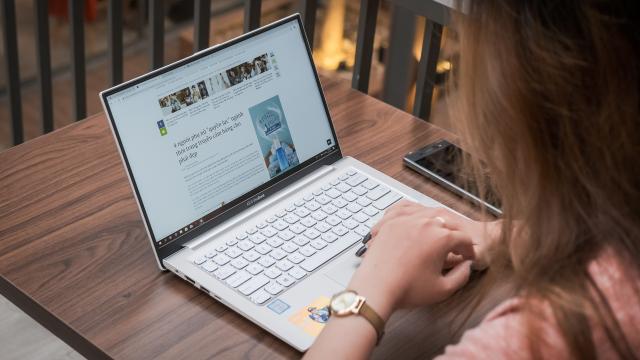There are a bunch of different extensions you can use to take full-page screenshots in your browser—typically a more elegant way to preserve a site’s contents than “printing” it as a PDF or saving it to your computer as a complete website. Since I use Chrome, Full Page Screen Capture has been my go-to for some time, but you can also take these screenshots manually if you don’t want to bother installing something new to do it. (Same with Firefox.)
One curious issue I’ve been having for as long as I can remember is that taking screenshots this way—via a browser extension or even the manual trick—has always resulted in a big, fat glob of nothing. Try as I might, I’d always get a screenshot that was entirely black or transparent, definitely not the contents of the website I was looking to save.
I tried troubleshooting this issue by testing out different extensions for taking screenshots, but when that didn’t fix anything, I gave up.
However, I’m pleased to report that I’ve finally found the solution that restores full screenshotting functionality across Chrome and Firefox. (Those weird all-black screens appeared on both browsers regardless of extension.)
While this technique might be specific to my setup, I’m not using any hardware that others wouldn’t: an Nvidia graphics card with up-to-date drivers, a regularly updated version of Windows 10, no weird browser extensions or USB devices causing chaos, etc.
I mention the Nvidia bit because the solution actually involves my graphics card (slightly). I found that by turning off hardware acceleration in Chrome and Firefox, which added some slowness to my tabs-packed sessions, I could magically take seamless, full-page screenshots once again. I’m not entirely sure why this fix works, but it does, and that’s what matters most to me.
It’s easy to try out this troubleshooting technique yourself:
Chrome
-
Click on the three-dot icon in the browser’s upper-right corner
-
Click on “Settings”
-
Type “hardware” in the search box if you’re feeling lazy. Otherwise, scroll down and click on the “Advanced” section at the bottom of the page, and then scroll down more until you see the “System” section
-
Uncheck “Use hardware acceleration when available”
Firefox
-
Click on the three-line “hamburger” icon in the browser’s upper-right corner
-
Click on “Preferences”
-
Type “hardware” into the search box, or scroll down to the “Performance” section
-
Uncheck “Use recommended performance settings”
If you don’t want to fuss with any of that, you could also switch computers – if possible. While I had all sorts of issues on my desktop PC, I found that capturing full-page screenshots worked perfectly on my MacBook, of all things.
Nevertheless, it’s not that hard to turn hardware acceleration on and off to fix a quick issue, and it’s one more idea to add to your bag of tricks should you encounter browser issues (related to graphics) that you can’t quite pinpoint.

Comments